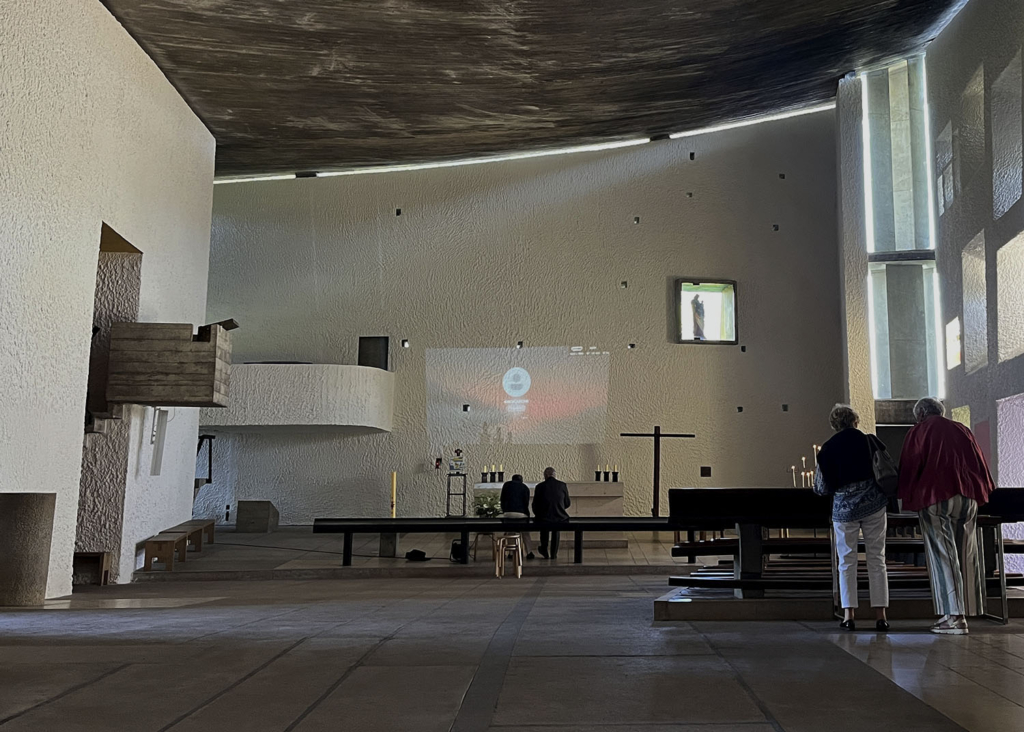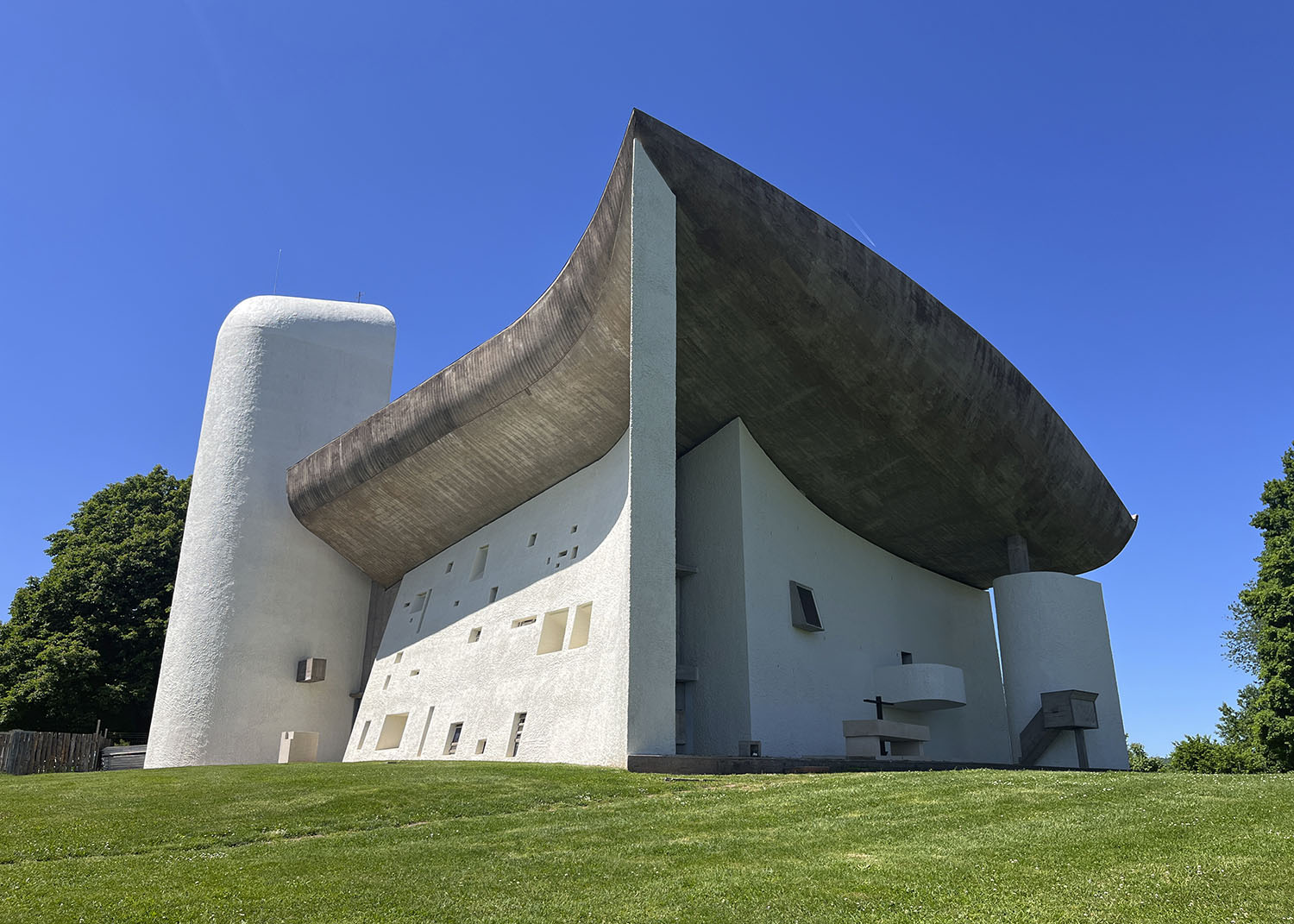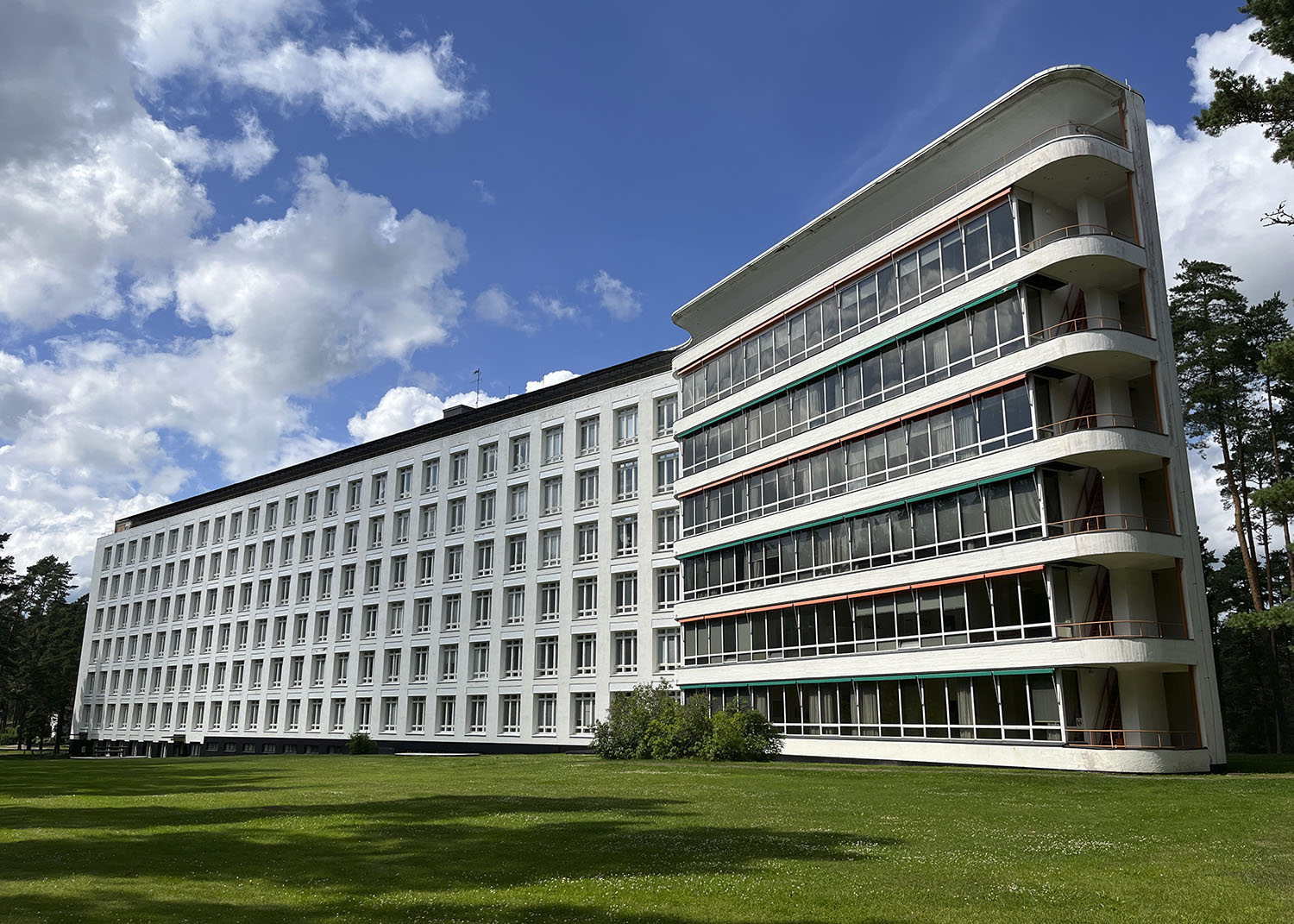On Iconic Architecture

A mythology of an iconic modern architecture of the 20th century is told like this:
When the building was completed in 193X, it looked like a spaceship that had landed in an empty field. At first, it was so extraordinary that the local residents were horrified and didn’t appreciate it. But, a good design can change people’s perceptions! Gradually, the architecture became beloved local landmark. Here is the famous black and white picture of the building in 195X, taken by the famous photographer X.X. In 198X, the building was in danger of being demolished due to its deterioration and redevelopment of the area, but was saved by the preservation movement led by the professor X.X. and the local community. In 200X, the building was designated to the UNESCO World Heritage List. Today it attracts XX thousand architectural pilgrims from all over the world every year. The tote bag with the architect’s drawing on it can be purchased at the shop next to the entrance.
So, at what point did this architecture become an icon?
The process by which a modern architecture becomes an icon is similar to the process by which a religious saint becomes an icon; it is a process by which an extraordinary individual that stands out from the surroundings gradually becomes part of everyday life. For example, the interior of an Orthodox church is filled with icons of saints. They are extraordinary holy figures, but you can also buy smaller icons of the same saints in the souvenir shop next to it. Then the icons are taken homes and displayed in ordinary interiors.
Similarly, modern architecture penetrates everyday life through becoming image. The 20th century was a period of rapid development in media for circulating images. Extraordinary modern architectures were popularised by being photographed, published in magazines, featured in films etc. In the age of modernisation and acceleration, the image of an architecture could have become an icon even before the architecture is realised. If so, the spaceship of modern architecture did not crash land by accident —it landed precisely at its destination.
In 2025 I visited Le Corbusier’s Chapelle Notre-Dame du Haut in Ronchamp for the first time. When I reached the top of the hill, the chapel from ‘that angle’ appeared in front of me. It was the iconic piece of architecture, exactly like the image I have seen countless times before. The feeling I had was not déjà vu, but a sense that I’ve already owned this (image of) architecture in my mind. I had the same feeling when I visited Alvar Aalto’s Paimio Sanatorium, another icon of modernism, for the first time. Coincidence or not, in both buildings, the entrance is located on the other side of ‘the angle’ —which makes a perfect iconic photography of architecture with no humans in it.


Text: June 2025